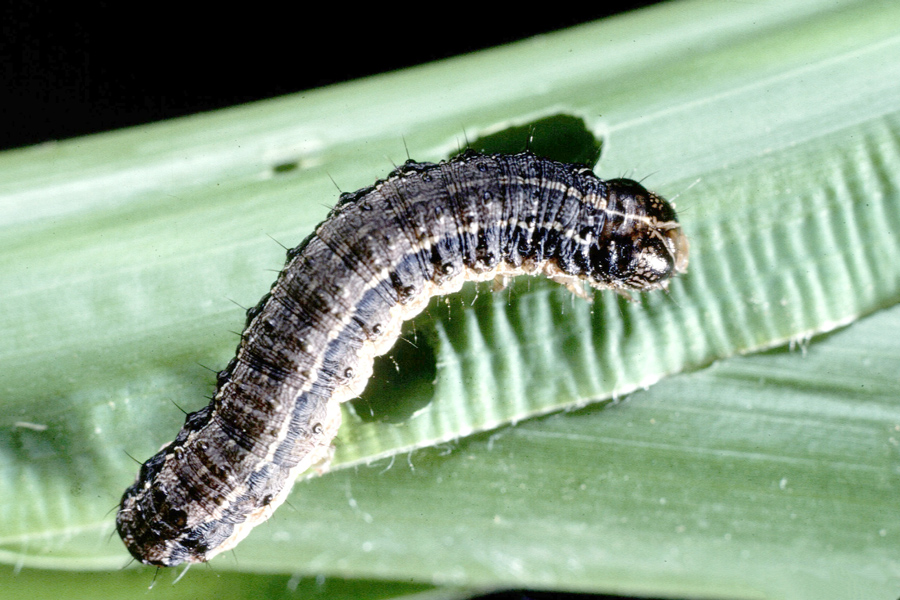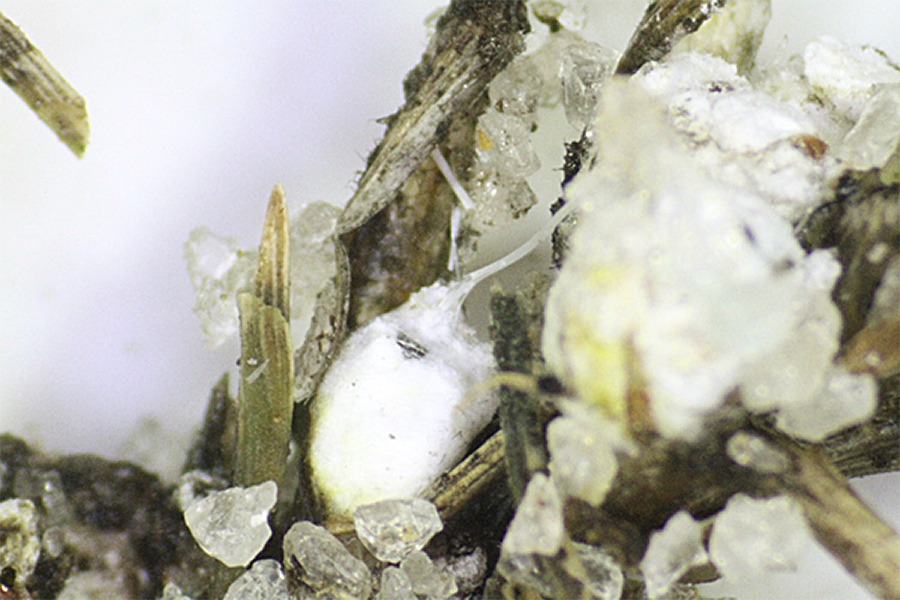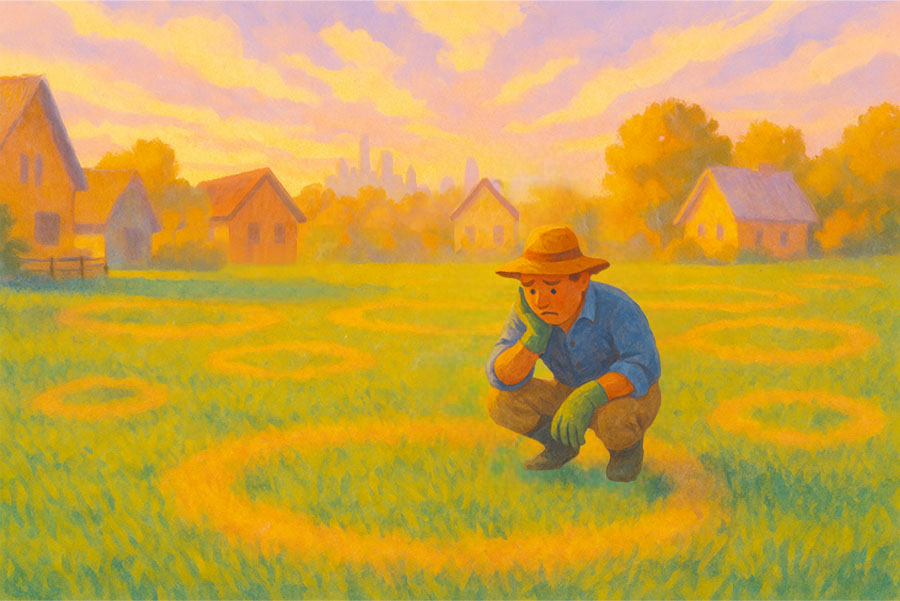Japanese beetles and other summer beetles will soon be busy chewing plants. University of Georgia Cooperative Extension agents get the most calls about these destructive garden pests in June and July.
Adult Japanese beetles live for four to six weeks, lay eggs and die. The rest of the year, the beetles live underground in a grub stage. These plump, C-shaped white grubs literally turn up in gardens when soil is tilled in the spring. They feed on the roots of grass and other plants before maturing into adult beetles the next summer.
Adults can fly in and out
Most homeowners rarely have grub populations large enough to cause damage to home lawns. If lawn treatments are necessary, late summer and early fall applications are most effective at killing young grubs. However, controlling the grub stage generally has little effect on the overall damage caused by adult beetles, since the adults can fly into your landscape from miles away.
Adult beetles cause the most visible damage to plants in a very short window of time. The good news is that because the beetles only affect the leaves of trees and shrubs, plants that are otherwise healthy can tolerate significant leaf loss without long-term consequences.
If they’ve dined before, they’ll be back
If Japanese beetles have plagued your landscape in previous years, there’s a good chance they will return to dine on their preferred plants. Japanese beetles feed on more than 300 species of broad-leaved plants, but some 50 species seem to be their preferred diet.
Commonly attacked hosts include peach, cultivated and wild grapes, raspberry, plum, roses, apple, cherry, corn, hibiscus, hollyhock, dahlia, zinnia, elm, horse chestnut, linden, willow, crape-myrtle, elder, evening primrose and sassafras.
To manage Japanese beetles, follow these steps:
- Monitor plants closely in late May and early June. This is the time when adult beetles will start arriving. The first beetles to arrive are known as “scouts.” When they find a good food source, they release scents that attract other beetles. The key is to catch these scouts as soon as possible. Knock the adults off of plants and kill them by dropping them into a container of soapy water. This is a good organic control option for small infestations.
- Avoid installing plants that Japanese beetles prefer. Instead, plant non-attracting plants like begonias, carnations, boxwoods, columbine, daisies, dogwood, forsythia, hollies, hydrangeas, junipers and magnolias. Keep a journal of other plants that avoid beetle damage for making future garden selections.
- Several “lure” traps are available on the market. These traps are not recommended for general use in a small garden area because they can actually work too well and attract more beetles than would normally be present. Place traps in areas away from gardens and landscapes to lure beetles away.
- Control adult beetles with over-the-counter insecticides available at local garden centers. Select insecticides that contain the active ingredient carbaryl, bifenthrin, cyfluthrin, deltamethrin, lambda-cyhalothrin or permethrin. During heavy adult activity periods, sprays may be needed every 5 to 10 days to protect high-value specimen plants like roses.
Applications of a systemic insecticide containing imidacloprid generally need to be made 20 days before anticipated Japanese beetle adult activity, which usually occurs around mid-May. Systemic treatment options are not labeled for use on plants that produce edible fruits. As always, read and follow all labeled application rates and safety precautions when using any insecticides.





